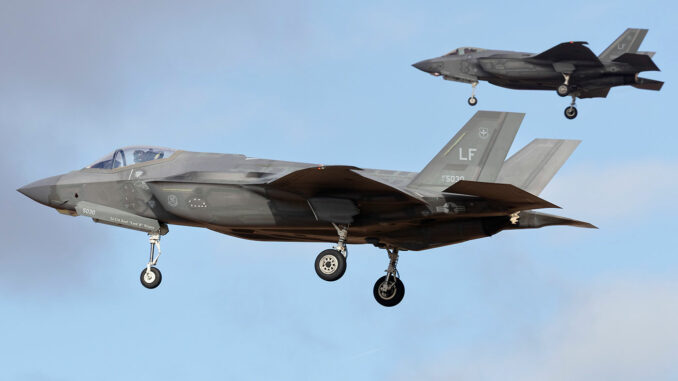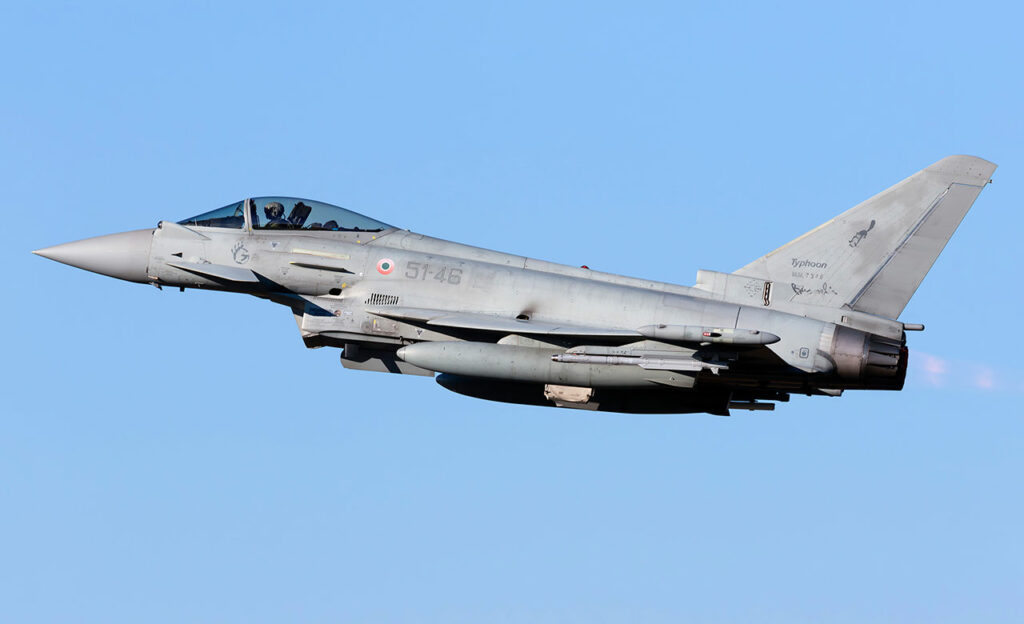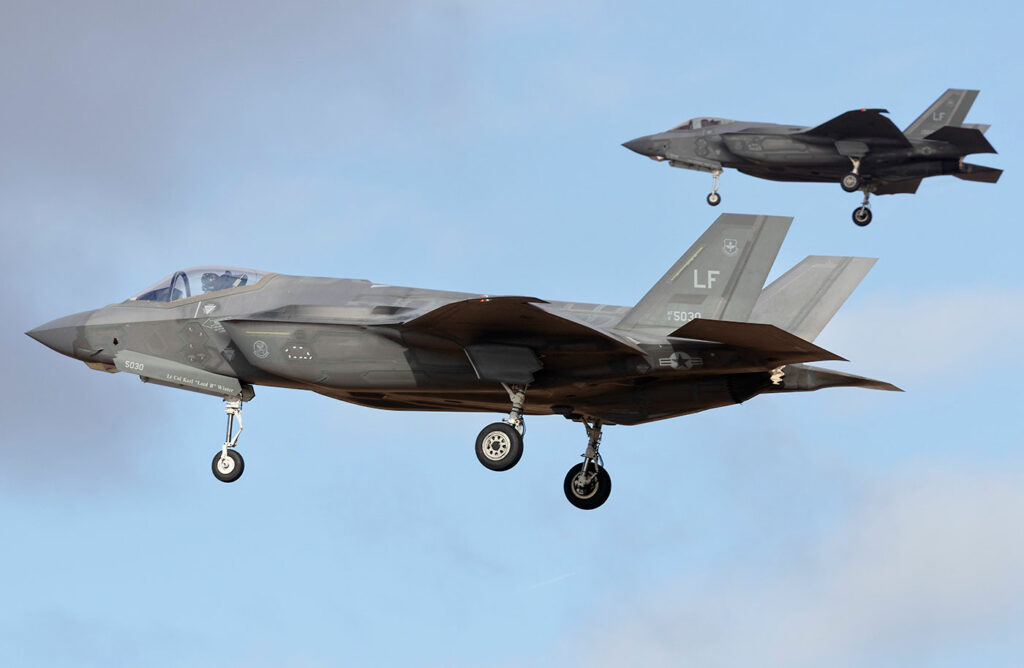
Technical differences between 4th and 5th generation fighter jets: stealth, sensors, weaponry, connectivity, and price.
Modern fighter jets
Modern fighter jets are classified by generation based on their technical capabilities. This classification helps armies compare performance, versatility, and the level of system integration. Fourth-generation fighter jets were introduced in the late 1970s. Examples include the Rafale, the F-16, and the Eurofighter. These aircraft brought significant advances: increased maneuverability, improved weapons systems, and electronic scanning radars.
Fifth-generation fighter jets, such as the F-22 and F-35, entered service in the 2000s. Their design is based on reduced radar signature (stealth), sensor fusion, and networked capabilities. These aircraft are designed to anticipate threats and survive in environments saturated with defense systems.
The differences between these two generations are not limited to technology. They also influence operational doctrines, maintenance costs, and the way air forces view future conflicts. This article presents the concrete differences between a 4th generation fighter jet and a 5th generation fighter jet, with figures, specific examples, and a pragmatic take on the subject.
Understanding the classification of fighter aircraft generations
The concept of “generation” as applied to fighter aircraft is not officially defined by a single authority, but it is widely used in military, industrial, and specialized circles to classify aircraft according to their technological level. This classification emerged in the 1980s to better structure the rapid evolution of air capabilities since World War II. It is based on technical rather than chronological criteria, which allows aircraft designed at different times to be included in the same generation.
Five generations are generally distinguished, each marked by major technological breakthroughs. The first generation includes jet aircraft from the 1940s and 1950s, without radar or guided missiles. The second generation introduced the first radars and short-range missiles. The third generation incorporated increased maneuverability, guided air-to-air missiles, and the first multi-role capabilities. Starting in the 1970s, so-called fourth-generation aircraft benefited from electric flight controls, modern radars, and the ability to engage multiple targets. The fifth generation, since the 2000s, is based on stealth, sensor fusion and network integration.
Each generation is defined by a set of specific technical criteria:
- The propulsion system
- The type of onboard radar
- The ability to avoid detection (stealth)
- Tactical data management
- Integration into a multi-domain warfare environment
This classification is useful for anticipating future needs and guiding development programs. It also allows the performance of different aircraft to be compared according to common technical benchmarks, even if the geopolitical contexts or doctrines of use vary.

What defines a 4th generation fighter aircraft
Fourth-generation fighter aircraft appeared in the late 1970s. Their design is based on significant improvements in flight performance, weapon carrying capacity, and the efficiency of onboard sensors. Among the best-known models are the F-16 Fighting Falcon, the Mirage 2000, the Rafale and the Eurofighter Typhoon. Although these aircraft have notable differences, they share a common set of technical characteristics.
One of the key elements of this generation is the introduction of fly-by-wire flight controls, which allow for greater maneuverability and precise control at high speeds. The aircraft can perform tight turns and maintain dynamic stability, even in unstable configurations. The maximum speed often exceeds Mach 2, with an operational ceiling of over 15,000 meters and a typical range of 1,500 to 2,000 kilometers, depending on the configuration.
In terms of sensors, these aircraft are equipped with mechanically scanned radars (PESA) or, in the most recent versions, electronically scanned radars (AESA). They are compatible with a wide variety of medium- and long-range air-to-air missiles (AMRAAM, MICA, Meteor) and can carry a large payload, up to 9,000 kg for the Rafale.
However, these aircraft have operational limitations when faced with modern air defense systems and adversaries with advanced jamming capabilities. Their radar signature remains significant, making them easier to detect. In addition, the lack of native sensor fusion requires pilots to manage information from different systems separately, which can increase the cognitive load in complex combat situations.
What characterizes a 5th generation fighter jet
5th generation fighter jets incorporate capabilities that represent a technological break with previous generations. They were designed from the outset to operate in highly contested environments, where detection and rapid response capabilities are crucial. The iconic models of this generation are the F-22 Raptor, the F-35 Lightning II, the Russian Su-57 and the Chinese J-20.
One of the fundamental elements is stealth. This is not based solely on external shape, but also on the use of radar-absorbing materials, the suppression of resonance in air intakes, and structural lines designed to reduce reflective surfaces. The radar signature of an aircraft such as the F-35 is estimated at less than 0.005 m², compared to several square meters for a 4th generation aircraft.
Another key element is data fusion. Onboard sensors (AESA radars, infrared sensors, passive sensors) transmit cross-referenced and prioritized information in real time. The pilot has access to a unified interface that synthesizes all the data from the battlefield. These aircraft are also designed to be network nodes, capable of exchanging information with other platforms such as drones, ships, and ground systems.
The sensors on these aircraft have advanced capabilities, particularly in electronic warfare (jamming, decoys, passive detection), and some functions are already based on decision support algorithms. The F-35, for example, has more than eight main sensors and an automatic threat processing system.
Finally, the architecture of fifth-generation aircraft enables predictive maintenance through continuous analysis of flight and operating data. This reduces downtime and allows for better logistics planning, which is essential for maintaining operational availability.
Technical comparison in figures: fourth vs. fifth generation
A comparison between a 4th generation fighter jet and a 5th generation aircraft reveals significant differences in technical, economic and operational terms. These differences directly influence mission planning, operating costs and the strategic choices made by armed forces.
| Criterion | 4th generation (e.g. Rafale, F-16) | 5th generation (e.g. F-22, F-35) |
|---|---|---|
| Maximum speed | Mach 2 (F-16) | Mach 2.25 (F-22) / Mach 1.6 (F-35) |
| Range | 1,500 to 2,000 km | 2,200 to 2,800 km |
| Radar | PESA / AESA | AESA + passive sensors + IR |
| Missiles | AMRAAM, MICA, Meteor | AIM-120D, Meteor, SDB, JSOW |
| Unit cost (estimated) | €70–100 million | €100–180 million |
| Flight hour (cost) | €15,000 to €20,000 | €25,000 to €35,000 |
The maintenance costs per flight hour are higher for fifth-generation aircraft. The F-35A, for example, costs around €32,000 per hour, compared to €18,000 for a Rafale. This difference can be explained by the complexity of the onboard systems, stealth management, and predictive maintenance.
The average repair time is also longer for stealth aircraft. The time between two operational missions is around 10 hours for an F-35, compared to 6 to 8 hours for a Rafale, depending on conditions.
In terms of missions, 4th generation aircraft perform well in air superiority and ground support, particularly in low-intensity conflicts. 5th generation aircraft are suited to precision strikes in hostile environments, with greater anticipation and penetration capabilities thanks to stealth and sensor fusion.

Operational and strategic challenges
Fourth- and fifth-generation fighter aircraft respond to distinct operational rationales related to threats, doctrines of use, and the requirements of the armed forces. The arrival of 5th generation aircraft is part of a desire to adapt air assets to more complex conflicts, marked by the convergence of environments (land, air, sea, space and cyber).
Fifth-generation aircraft have been designed to integrate into multi-domain systems. They can exchange data in real time with other vectors, whether satellites, ships, armored vehicles, or drones. This integration capability enables better coordination and increased efficiency during coordinated strikes or intelligence missions. In comparison, 4th generation aircraft often require liaison systems or updates to operate in this type of interconnected environment.
The adaptability of 5th generation aircraft is more pronounced in high-intensity conflicts. Their stealth and tactical autonomy allow them to penetrate heavily defended airspace. Fourth-generation aircraft, although more versatile, must operate with greater cover (electronic warfare, escort) in such a context. In asymmetric conflicts, however, both generations can be used, but the operational cost of the fifth generation remains higher.
Interoperability is also a key criterion. The F-35 is used by several NATO member countries, facilitating joint operations. Fourth-generation aircraft, although older, are also widely shared and have often been modernized to remain compatible.
Finally, fifth-generation aircraft involve heavy requirements in terms of pilot training, logistics, and ground infrastructure (stealth-compatible hangars, data processing centers). Their deployment therefore requires more complex organization and more detailed planning.
Prospects for the future
Fifth-generation fighter aircraft offer advanced capabilities in terms of stealth, connectivity, and information processing. However, their technical complexity results in high costs, both in terms of purchase and operation. Maintenance, training, and the necessary infrastructure sometimes hinder their full exploitation. Furthermore, stealth remains dependent on the operational environment and is not effective against all types of sensors.
Sixth-generation projects (such as the Franco-German-Spanish NGF and the British Tempest) aim to go further: integration of artificial intelligence, cooperation with drones, modular payloads, and algorithm-assisted piloting. These platforms will also have to strike a balance between cost, ease of use and operational resilience.
Ultimately, performance alone will not be enough: the ability to evolve, cooperate and remain operational in complex contexts will be decisive for future generations.
War Wings Daily is an independant magazine.